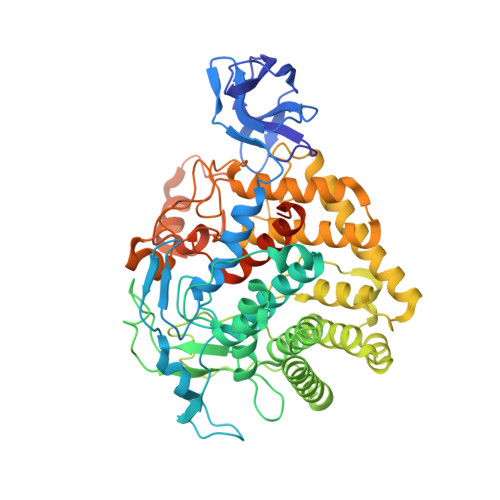Engineering glycoside hydrolase stability by the introduction of zinc binding.
Ellinghaus, T.L., Pereira, J.H., McAndrew, R.P., Welner, D.H., DeGiovanni, A.M., Guenther, J.M., Tran, H.M., Feldman, T., Simmons, B.A., Sale, K.L., Adams, P.D.(2018) Acta Crystallogr D Struct Biol 74: 702-710
- PubMed: 29968680
- DOI: https://doi.org/10.1107/S2059798318006678
- Primary Citation of Related Structures:
5U0H, 5U2O - PubMed Abstract:
The development of robust enzymes, in particular cellulases, is a key step in the success of biological routes to `second-generation' biofuels. The typical sources of the enzymes used to degrade biomass include mesophilic and thermophilic organisms. The endoglucanase J30 from glycoside hydrolase family 9 was originally identified through metagenomic analyses of compost-derived bacterial consortia. These studies, which were tailored to favor growth on targeted feedstocks, have already been shown to identify cellulases with considerable thermal tolerance. The amino-acid sequence of J30 shows comparably low identity to those of previously analyzed enzymes. As an enzyme that combines a well measurable activity with a relatively low optimal temperature (50°C) and a modest thermal tolerance, it offers the potential for structural optimization aimed at increased stability. Here, the crystal structure of wild-type J30 is presented along with that of a designed triple-mutant variant with improved characteristics for industrial applications. Through the introduction of a structural Zn 2+ site, the thermal tolerance was increased by more than 10°C and was paralleled by an increase in the catalytic optimum temperature by more than 5°C.
Organizational Affiliation:
Joint BioEnergy Institute, Emeryville, CA 94608, USA.
















